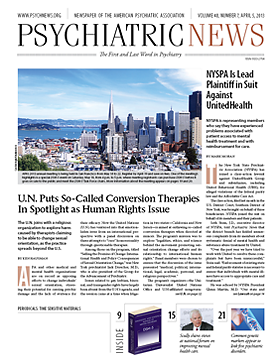I am perplexed by APA’s celebration of the new CPT codes. They seem to needlessly increase the bifurcation of psychiatric care into E/M services and psychotherapy instead of encouraging comprehensive care. The payors have already trivialized psychiatric treatment into brief encounters around medication. This has gotten to the point when most patients do not realize that psychiatrists still talk to patients. We should instead articulate a theory of psychiatric practice that includes both components as essential to appropriate care.
In large, complex organizations such as ours, the new codes will create much confusion and invite increased scrutiny by our compliance department.
One of my residents asked me quite seriously whether he should use a stopwatch to assess each component of a visit.
I cannot believe APA went along with this without more serious examination.
BARRY CHAITIN, M.D.Newport Beach, Calif.
Response from Ronald Burd, M.D., chair of APA’s Committee on RBRVS, Codes, and Reimbursements:
We appreciate the concerns you express in your letter about the new CPT codes for psychiatry. The intention of the new coding format was not in any way to trivialize psychotherapy, but rather to permit psychiatrists to be paid appropriately for the medical work they do along with psychotherapy, work that cannot be provided by nonphysician mental health providers who also use the codes in the psychiatry section of CPT.
The previous CPT codes that were used by psychiatrists to represent psychotherapy provided with medical evaluation and management (E/M) services (for example, 90805, 90807) contained a valuation for the E/M portion of the work that was equivalent to the value given to the lowest level of E/M work listed in CPT—E/M work that does not require the presence of a physician. Moreover, this amount was fixed, and the E/M work was valued the same regardless of the amount of medical work done or the complexity of medical decision making required. It was felt there needed to be a mechanism so that psychiatrists providing medical oversight of their patients could be appropriately compensated for that work. The use of E/M codes along with a psychotherapy code also has enabled explicit recognition of a medical procedure performed by psychiatrists.
The solution developed by CPT—permitting the use of the appropriate level E/M code along with a timed add-on code for the psychotherapy provided—may not be the most elegant solution to this problem, but it does allow for recognition of the medical work done by psychiatrists and should permit psychiatrists to be reimbursed more appropriately as physicians. ■
